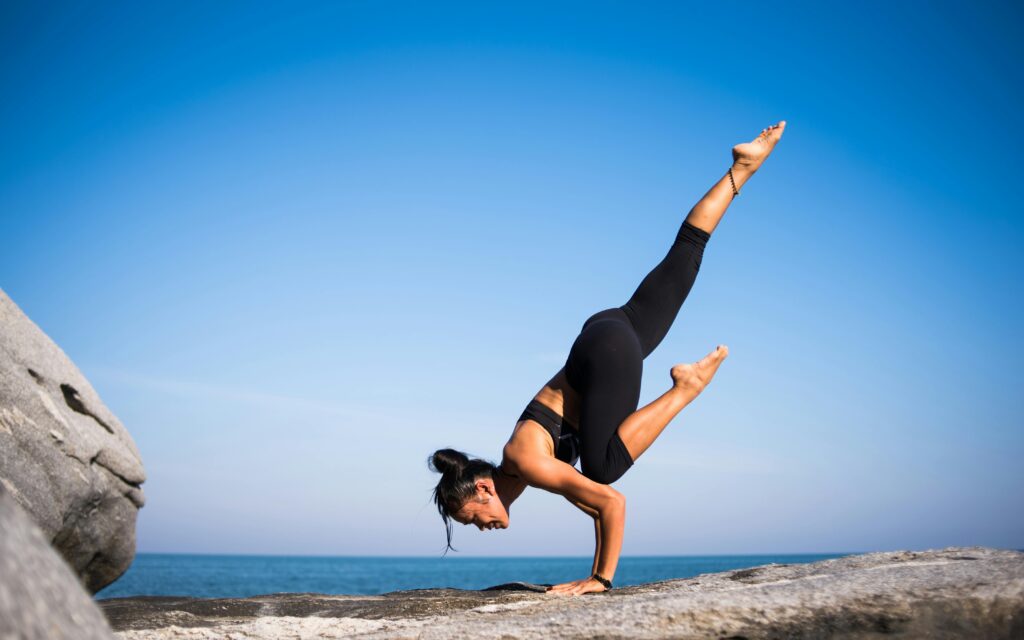Introduction
Physical activity is a vital component of a healthy lifestyle, contributing significantly to physical, mental, and emotional well-being. Despite its well-documented benefits, many people do not engage in sufficient physical activity. This article explores the importance of physical activity, the benefits it provides, the risks associated with a sedentary lifestyle, and practical tips for incorporating more activity into daily life.
The Importance of Physical Activity
Physical activity encompasses all movements that expend energy, ranging from structured exercise programs to daily tasks like walking and gardening. Engaging in regular physical activity is essential for:
- Physical Health: Enhances cardiovascular health, strengthens muscles and bones, and helps maintain a healthy weight.
- Mental Health: Reduces stress, anxiety, and depression, while improving mood and cognitive function.
- Longevity: Promotes a longer, healthier life by reducing the risk of chronic diseases and improving overall quality of life.

Types of Physical Activity
Physical activity can be categorized into several types, each offering unique benefits:
Aerobic Exercise
Aerobic exercise, also known as cardiovascular exercise, involves continuous, rhythmic activities that increase heart rate and breathing. Examples include:
- Walking: A low-impact activity suitable for people of all fitness levels.
- Running: An effective way to improve cardiovascular health and build endurance.
- Cycling: A low-impact exercise that strengthens the lower body and enhances cardiovascular fitness.
- Swimming: Provides a full-body workout while being gentle on the joints.
Strength Training
Strength training, or resistance training, involves exercises that improve muscle strength and endurance. Examples include:
- Weightlifting: Using free weights or weight machines to target specific muscle groups.
- Bodyweight Exercises: Activities like push-ups, squats, and lunges that use body weight as resistance.
- Resistance Bands: Portable bands that provide resistance for various exercises.
Flexibility and Balance Exercises
Flexibility and balance exercises enhance range of motion, improve posture, and reduce the risk of falls. Examples include:
- Stretching: Helps maintain flexibility and prevent muscle stiffness.
- Yoga: Combines stretching, strength, and balance exercises with mindfulness and relaxation techniques.
- Tai Chi: A form of martial arts that emphasizes slow, controlled movements and balance.
Benefits of Regular Physical Activity
Engaging in regular physical activity provides numerous benefits for physical, mental, and emotional health. Here are some of the key advantages:
Physical Health
- Cardiovascular Health: Regular aerobic exercise strengthens the heart, improves circulation, and reduces the risk of heart disease, stroke, and high blood pressure.
- Weight Management: Physical activity helps regulate body weight by burning calories and increasing metabolism.
- Muscle and Bone Health: Strength training exercises build and maintain muscle mass, increase bone density, and reduce the risk of osteoporosis.
- Improved Metabolism: Regular physical activity enhances metabolic function, aiding in better digestion and nutrient absorption.
- Enhanced Immune Function: Exercise boosts the immune system, helping the body fight off infections and illnesses.
Mental Health and Cognitive Function
- Mood Enhancement: Physical activity stimulates the release of endorphins, known as “feel-good” hormones, which improve mood and reduce symptoms of depression and anxiety.
- Stress Reduction: Exercise reduces levels of the body’s stress hormones, such as adrenaline and cortisol, promoting relaxation and reducing tension.
- Improved Sleep: Regular physical activity helps regulate sleep patterns, leading to better quality sleep and reduced insomnia.
- Cognitive Function: Exercise increases blood flow to the brain, enhancing memory, concentration, and overall cognitive function.
- Self-Esteem and Confidence: Achieving fitness goals and improving physical appearance can boost self-esteem and confidence.
Quality of Life
- Increased Energy Levels: Regular physical activity improves overall energy levels and reduces feelings of fatigue.
- Better Mobility and Flexibility: Flexibility and balance exercises improve joint health, posture, and overall mobility.
- Social Interaction: Participating in group exercises or sports can foster social connections and improve emotional well-being.
- Independence in Older Adults: Regular physical activity helps older adults maintain strength, balance, and mobility, promoting independence and reducing the risk of falls.
Risks of a Sedentary Lifestyle
A sedentary lifestyle, characterized by prolonged periods of inactivity, is associated with numerous health risks. Some of the consequences of physical inactivity include:
Physical Health
- Obesity: Lack of physical activity contributes to weight gain and obesity, increasing the risk of various health problems.
- Cardiovascular Disease: Sedentary behavior is a major risk factor for heart disease, stroke, and high blood pressure.
- Diabetes: Physical inactivity is linked to insulin resistance and an increased risk of type 2 diabetes.
- Musculoskeletal Problems: Prolonged inactivity can lead to muscle weakness, joint stiffness, and chronic pain.
- Poor Metabolic Health: Inactivity negatively affects metabolic health, leading to issues such as high cholesterol and triglycerides.
Mental Health and Cognitive Function
- Increased Stress and Anxiety: Physical inactivity can contribute to higher levels of stress, anxiety, and depression.
- Cognitive Decline: Sedentary behavior is associated with impaired cognitive function and an increased risk of dementia and Alzheimer’s disease.
- Poor Sleep Quality: Lack of physical activity can disrupt sleep patterns and contribute to insomnia.
Quality of Life
- Reduced Energy Levels: Inactivity can lead to feelings of fatigue and low energy.
- Decreased Mobility and Flexibility: Lack of physical activity can result in decreased joint flexibility, poor posture, and reduced mobility.
- Social Isolation: Sedentary behavior may lead to social isolation and loneliness, impacting emotional well-being.
Practical Tips for Incorporating Physical Activity
Incorporating more physical activity into daily life can be achieved through small, sustainable changes. Here are some practical tips for increasing physical activity:
Set Realistic Goals
- Start Small: Begin with achievable goals, such as a 10-minute walk, and gradually increase the duration and intensity of activity.
- Set Specific Goals: Define clear, specific goals, such as walking 30 minutes a day, five days a week.
Find Activities You Enjoy
- Choose Enjoyable Activities: Engage in activities that you find fun and enjoyable, such as dancing, hiking, or playing a sport.
- Variety is Key: Mix different types of physical activities to keep things interesting and work different muscle groups.
Make Physical Activity a Part of Daily Routine
- Walk or Bike: Incorporate walking or biking into your daily routine, such as commuting to work or running errands.
- Use Stairs: Opt for stairs instead of elevators or escalators whenever possible.
- Active Breaks: Take short, active breaks during work or study sessions to stretch, walk, or perform light exercises.
Involve Family and Friends
- Exercise Together: Engage in physical activities with family or friends to stay motivated and make it more enjoyable.
- Join a Group: Participate in group exercise classes, sports teams, or fitness clubs for social interaction and support.
Utilize Technology
- Fitness Apps: Use fitness apps or wearable devices to track your activity levels, set goals, and monitor progress.
- Online Workouts: Follow online workout videos or fitness programs that you can do at home.

Make It Fun
- Music and Podcasts: Listen to music, podcasts, or audiobooks while exercising to make the time more enjoyable.
- Challenges and Rewards: Set up personal challenges and reward yourself for achieving fitness milestones.
Special Considerations
Different populations have unique needs and considerations when it comes to physical activity. Here, we will explore some special considerations for various groups.
Children and Adolescents
Children and adolescents need regular physical activity to support growth and development. Encourage active play, sports participation, and family activities to promote a healthy lifestyle. Aim for at least 60 minutes of moderate to vigorous activity daily.
Pregnant Women
Physical activity during pregnancy offers numerous benefits, including improved mood, better sleep, and reduced pregnancy complications. Activities such as walking, swimming, and prenatal yoga are generally safe and beneficial. It’s important to consult with a healthcare provider for personalized recommendations.
Older Adults
Older adults should engage in regular physical activity to maintain strength, balance, and mobility. Low-impact activities, such as walking, swimming, and tai chi, are ideal. Strength training exercises can help preserve muscle mass and bone density. Consult with a healthcare provider before starting a new exercise program.
Individuals with Chronic Conditions
People with chronic conditions, such as diabetes, heart disease, or arthritis, can benefit from regular physical activity tailored to their needs. It’s essential to work with a healthcare provider or fitness professional to develop a safe and effective exercise plan.
Conclusion
Physical activity is a critical component of a healthy lifestyle, offering extensive benefits for physical, mental, and emotional health. Regular exercise enhances cardiovascular health, supports weight management, improves mood, and reduces the risk of chronic diseases. Understanding the importance of physical activity and incorporating it into daily life can lead to a healthier, happier, and more fulfilling life. By setting realistic goals, choosing enjoyable activities, and making small, sustainable changes, individuals can reap the myriad benefits of regular physical activity and improve their overall well-being.
Resources
- World Health Organization (WHO): Provides guidelines on physical activity for different age groups and health
